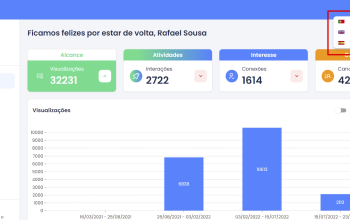8 signs you should improve your localization process

.png)
Very often, when you're engrossed in the everyday work, you do not realize how easily your localization process could be improved. For this reason, it is important to me to show you the following 8 warning signs you should look out for:
1. Waste of time
Are you mailing translation files around the world? Always struggling with this translation files?

Other people ask for the resource files to be translated and you hand them out and deep in your mind you know there will be some last minute changes the day before release and even more changes after release. Some time later (days or weeks) some translated files lands in your inbox and you copy them to your repository... But there are already a lot of changes... Some terms are not used anymore others are new and not yet translated and others are modified by the developers in the meanwhile.
2. Waterfall process
Are you trying to switch the development process to a more agile approach but the localization process does not fit? Is there no time to translate during the development iteration or sprint?

By implementing more SaaS (Software as a Service) products today's organizations start to introduce CI/CD pipelines (Continuous Integration / Continuous Deployment). Developers focuses on instrumenting the code with the help of some i18n libraries and extract texts into resource files so someone can translate them later. Normally during a development iteration or sprint there is no time to translate the resources. That’s why some organizations opt to add an extra step to the process after which no text resource may be added, edited, or deleted. This “freeze” period gives technical writers and translators the necessary time to work. The more text needs to be handled the longer this period while take. This process slows down the release of the software in all languages quite a bit and will result in not really doing a continuous deployment process anymore.
3. Missing context
Are the translated texts too long? Do you feel the translator did not understand what the product is?

By handing over the resource files to the translators, it is very difficult for them to imagine the translated texts in the real product. That's why very often the translated texts feels wrong when imported back to the product. Doing proper translations needs more information by providing the context or even better by being done incontext.
4. Hard translation management
Are translation texts suddenly deleted while translating? Is the format of the text corrupt after translating?

Translators and technical editors are humans too. Not only the lack of technical know how (html or markdown formatting, etc...) but also the power of their tooling is important and crucial. The worse the tooling the greater the danger of getting corrupt texts.
5. Poor integration
Do you wish using the same localization process for your product and other systems simultaneously, like your marketing website?

Mostly the product development and the marketing department are split in multiple teams. In that way the localization process evolves in different ways. Not having a central team being responsible for offering internationalization libraries, apis and localization guidelines makes it difficult to find synergies across different products and teams.
6. Locked in
Do you have troubles in finding open internationalization libraries compatible with your existing resource files or vice-versa find a localization solution compatible with your internationalization library?

Very often the localization process enforces to develop very customized tools and helper scripts if not standardized or at least based on open specifications, formats and protocols.
7. Unclear project progress
Are your resource files all fully translated? What is missing? What is the expected effort to complete?

Not having a centralized collaborative translation management system that is actively used by developers and translation editors makes it very difficult to forecast when a translation is fully translated and to plan its release.
8. Expensive
Are your translation orders too expensive? Do you have multiple dedicated personal resources?

There is not only the employee salary, but also the wasted time "waiting", proofreading and correcting the translated resources. And finally, each delay of your time-to-market costs a lot of money.
Advice

As we learned, localizing software releases is a nightmare and no translation tool really supports product managers, developers and translators well in software translations with continuous changes and additions. Someone started to work on locize.com to bridge the gap between translation and development.
Watch the introduction video to learn more.
locize removes the pain in the translation process. No more delays in shipping your software because of missing translations. Translator could keep up with changes from day one. The continuous localization process keeps up with your demanding business.
Stop waiting - start localizing.

